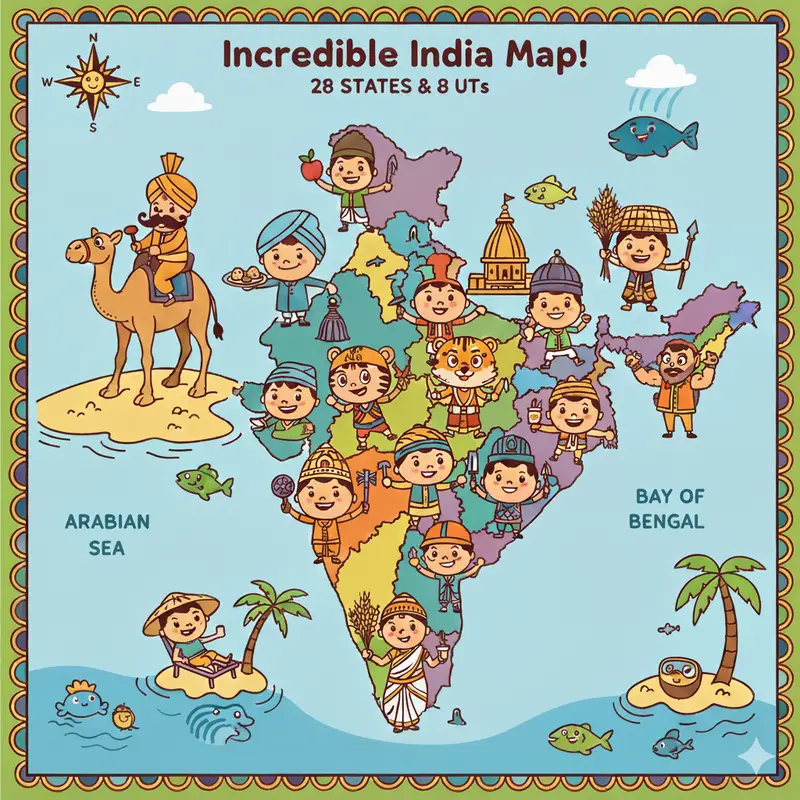Discover 10 of India’s National Parks: A Journey Through Nature’s Wonders
India, with its diverse landscapes and rich biodiversity, is home to 106 national parks spread across various states. These parks not only protect the country’s unique flora and fauna but also offer a glimpse into the natural beauty and wildlife of India. Let’s explore some of these fascinating national parks, their locations, and what makes them famous.
1. Jim Corbett National Park, Uttarakhand
Famous For: Bengal Tigers, diverse wildlife, and dense forests
Jim Corbett National Park, established in 1936, is India’s oldest national park. It is renowned for its population of Bengal tigers and offers an excellent opportunity to spot these majestic creatures in their natural habitat. The park is also home to a variety of wildlife including elephants, leopards, and numerous bird species.
2. Kaziranga National Park, Assam
Famous For: One-horned rhinoceros
Kaziranga National Park is a UNESCO World Heritage Site known for its population of the endangered one-horned rhinoceros. This park also boasts a high density of tigers and large herds of elephants, making it a paradise for wildlife enthusiasts.
3. Ranthambore National Park, Rajasthan
Famous For: Bengal Tigers and historic ruins
Ranthambore National Park is one of the largest and most famous national parks in northern India. It is especially known for its tiger population and the majestic Ranthambore Fort, which adds a historical touch to the natural beauty of the park.
4. Sundarbans National Park, West Bengal
Famous For: Bengal Tigers and mangrove forests
The Sundarbans National Park is a UNESCO World Heritage Site and the largest mangrove forest in the world. It is renowned for its population of the elusive Bengal tiger, known for their swimming abilities. The park’s unique ecosystem supports a variety of wildlife, including saltwater crocodiles and a plethora of bird species.
5. Gir National Park, Gujarat
Famous For: Asiatic Lions
Gir National Park is the only place in the world where Asiatic lions can be found in the wild. The park’s dry deciduous forests and savannah-type grasslands provide a perfect habitat for these magnificent lions, making it a must-visit for wildlife lovers.
Also Read: Making Multiplication Tables Fun: 6 The Power of Learning Through Songs
6. Bandhavgarh National Park, Madhya Pradesh
Famous For: High density of Bengal Tigers
Bandhavgarh National Park is known for having one of the highest densities of Bengal tigers in India. The park’s lush green valleys and rocky hill terrain create an ideal environment for tigers and other wildlife.
7. Periyar National Park, Kerala
Famous For: Elephants and scenic beauty
Periyar National Park, located in the Western Ghats, is famous for its large population of elephants. The park’s picturesque landscapes, including the beautiful Periyar Lake, make it a popular destination for nature lovers.
8. Kanha National Park, Madhya Pradesh
Famous For: Bengal Tigers and the inspiration for “The Jungle Book”
Kanha National Park is not only famous for its tiger population but also for being the inspiration behind Rudyard Kipling’s classic, “The Jungle Book.” The park’s lush meadows and dense forests provide a perfect backdrop for a variety of wildlife.
9. Valley of Flowers National Park, Uttarakhand
Famous For: Vibrant alpine flowers and breathtaking landscapes
Valley of Flowers National Park is a UNESCO World Heritage Site known for its stunning meadows of endemic alpine flowers. The park comes alive with a riot of colors during the monsoon season, making it a visual treat for visitors.
10. Hemis National Park, Ladakh
Famous For: Snow Leopards
Hemis National Park, located in the high-altitude region of Ladakh, is renowned for its population of snow leopards. The park’s rugged terrain and harsh climate provide a unique habitat for these elusive big cats.
Conclusion
India’s national parks are a treasure trove of natural wonders, each offering unique experiences and insights into the country’s rich biodiversity. From the majestic Bengal tigers of Jim Corbett to the vibrant flora of the Valley of Flowers, these parks are vital in preserving India’s natural heritage. Exploring these national parks not only provides an educational experience for children but also fosters a deeper appreciation for wildlife and conservation efforts.
By visiting these national parks, children can learn about the importance of protecting our environment and the incredible creatures that inhabit it. So, pack your bags, put on your explorer hat, and embark on a journey through India’s remarkable national parks!



